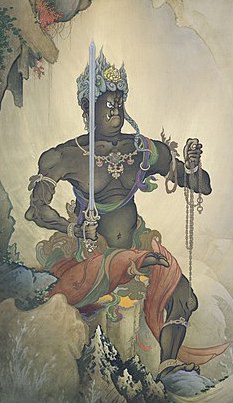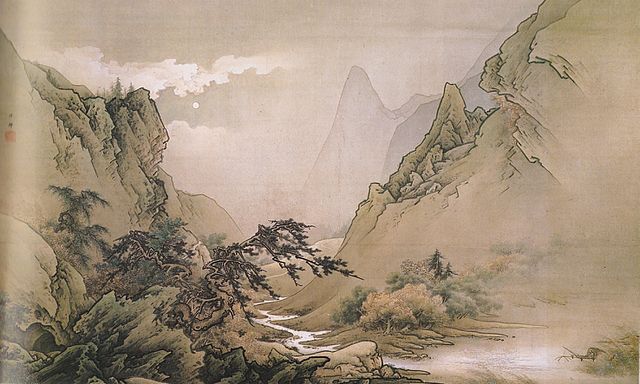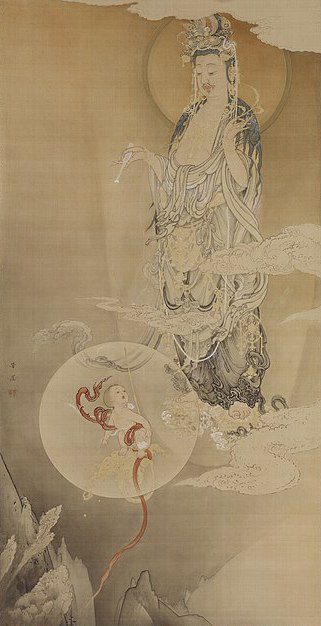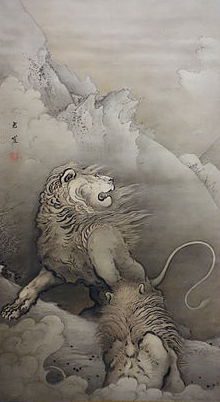Kano Hogai and Japan art: Buddhism and nature
Lee Jay Walker
Modern Tokyo Times

The Japanese artist Kano Hōgai (1828-1888) bridges the periods of Edo and Meiji. He is a notable artist who belongs to the art school of Kano. Therefore, despite the dramatic changes of the Meiji Period (1868-1912), his world belonged to the past.
However, the economic, political, and social convulsions of the ending of the Edo Period entailed difficult times for Hōgai. Thus he briefly cast iron to make a living and ran a shop that sold writing instruments – and other types of work during the bleakest period.

The art schools of Kano and Tosa provide a lovely dynamic to high culture concerning the arts. This artistic dynamic lasted for many centuries since the creation of both schools.
Kano Masanobu (1434–1530) is the real founder of the school of Kano. Hence, with the last great master dying in the early twentieth century, it highlights the longevity of this notable school. Therefore, the last three esteemed Kano artists – Shōsen’in (1823-1880), Hōgai (1828-1888), and Hashimoto Gahō (1835 –1908) – witnessed the modernization processes of the Meiji Period and the increasing encroachment of Western art.

The Smithsonian reports (art piece above) “This monumental painting of Kannon, a bodhisattva (enlightened being) associated with infinite compassion, portrays the Buddhist deity in the guise of a maternal figure who nurtures an infant below surrounded by a halo. Both figures hover among clouds high above a stark landscape that represents the world where the newborn child will live. This unusual presentation of the familiar deity Kannon was based on traditional Buddhist works of art, in which the deity is sometimes attended or accompanied by a child. Hogai’s work differs from traditional Buddhist paintings, however, in that the artist intended from the outset to create a painting for public display in art exhibitions rather than as an object of veneration for a Buddhist temple. This painting was exhibited at the Paris Salon in 1883.”

Hōgai belongs to the old world of the art school of Kano: while adapting to the changing artistic landscape of the Meiji Period. This entailed international influence on his art during the late stages of his life.
https://asia.si.edu/object/F1902.225/#object-content

PLEASE DONATE TO HELP MODERN TOKYO TIMES
Modern Tokyo News is part of the Modern Tokyo Times group
DONATIONS to SUPPORT MODERN TOKYO TIMES – please pay PayPal and DONATE to sawakoart@gmail.com
http://moderntokyotimes.com Modern Tokyo Times – International News and Japan News
http://sawakoart.com – Sawako Utsumi and her website – Modern Tokyo Times artist
https://moderntokyonews.com Modern Tokyo News – Tokyo News and International News
PLEASE JOIN ON TWITTER
https://twitter.com/MTT_News Modern Tokyo Times
PLEASE JOIN ON FACEBOOK